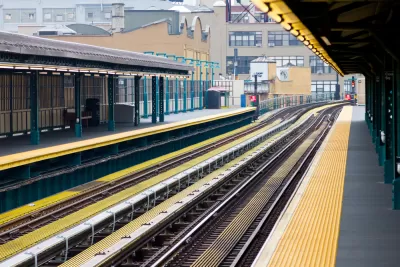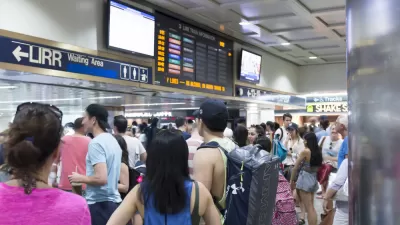The Regional Plan Association presents the details of a plan to build a rail line connecting the Bronx, Queens, and Brooklyn: the Triboro Line.

A recent policy brief shares the most recent analysis by the Regional Planning Association (RPA) into the Triboro Line proposal—a circumferential transit line connecting the three New York City boroughs of Brooklyn, Queens, and the Bronx, with a possible extension to Staten Island as well.
The brief begins by establishing the need for the project:
The majority of people living in the four boroughs outside Manhattan don’t use public transit to travel to work within the boroughs, even though they live in the city with the largest subway and bus network in the U.S. Why? Because New York City’s subways were designed to bring people into Manhattan, not to move them between other boroughs, and the buses that serve the boroughs are slow and unreliable.
According to the RPA brief, the Triboro Line could potentially offer "fast, convenient and direct transit connection" between the Bronx, Queens, and Brooklyn. The RPA first proposed the idea in A Region at Risk: The Third Regional Plan for the New York-New Jersey-Connecticut Metropolitan Area as an above-ground line, planned to take advantage of underused and abandoned rights-of-way.
The paper includes presents the case for the line, using infographics and lots of data to back up its argument, including why the proposal relies on rail and how it would mix passenger and freight rail along its 24-mile route.
FULL STORY: The Triboro: Transit for the Boroughs

Trump Administration Could Effectively End Housing Voucher Program
Federal officials are eyeing major cuts to the Section 8 program that helps millions of low-income households pay rent.

Planetizen Federal Action Tracker
A weekly monitor of how Trump’s orders and actions are impacting planners and planning in America.

Ken Jennings Launches Transit Web Series
The Jeopardy champ wants you to ride public transit.

Rebuilding Smarter: How LA County Is Guiding Fire-Ravaged Communities Toward Resilience
Los Angeles County is leading a coordinated effort to help fire-impacted communities rebuild with resilience by providing recovery resources, promoting fire-wise design, and aligning reconstruction with broader sustainability and climate goals.

When Borders Blur: Regional Collaboration in Action
As regional challenges outgrow city boundaries, “When Borders Blur” explores how cross-jurisdictional collaboration can drive smarter, more resilient urban planning, sharing real-world lessons from thriving partnerships across North America.

Philadelphia Is Expanding its Network of Roundabouts
Roundabouts are widely shown to decrease traffic speed, reduce congestion, and improve efficiency.
Urban Design for Planners 1: Software Tools
This six-course series explores essential urban design concepts using open source software and equips planners with the tools they need to participate fully in the urban design process.
Planning for Universal Design
Learn the tools for implementing Universal Design in planning regulations.
Ada County Highway District
Clanton & Associates, Inc.
Jessamine County Fiscal Court
Institute for Housing and Urban Development Studies (IHS)
City of Grandview
Harvard GSD Executive Education
Toledo-Lucas County Plan Commissions
Salt Lake City
NYU Wagner Graduate School of Public Service




























